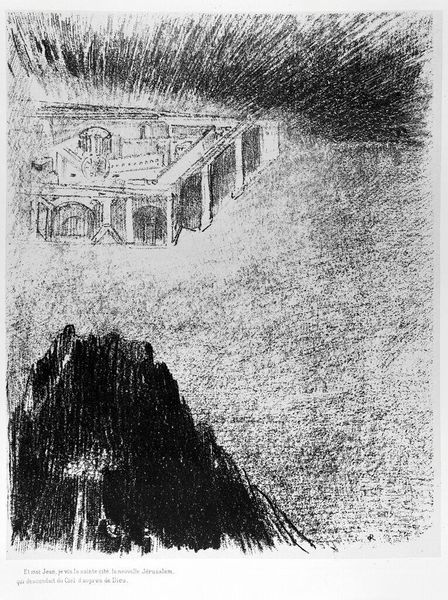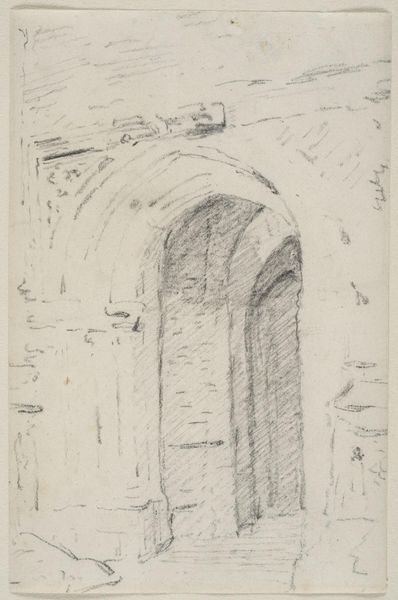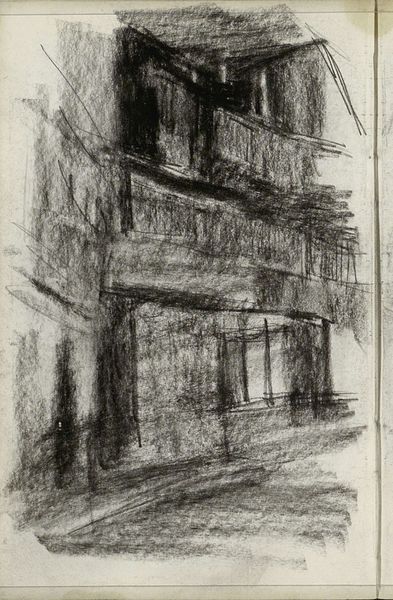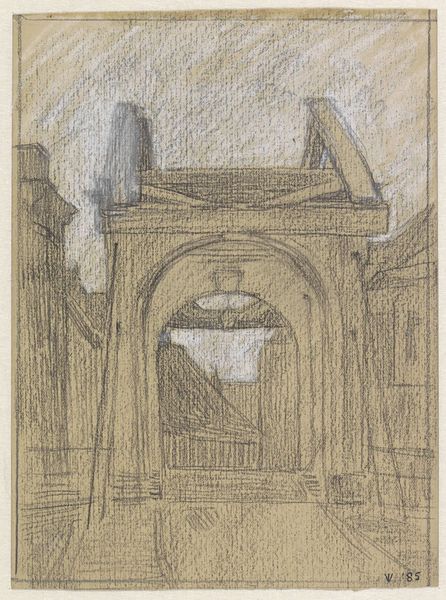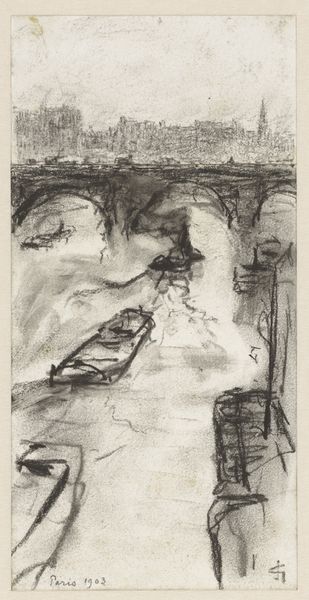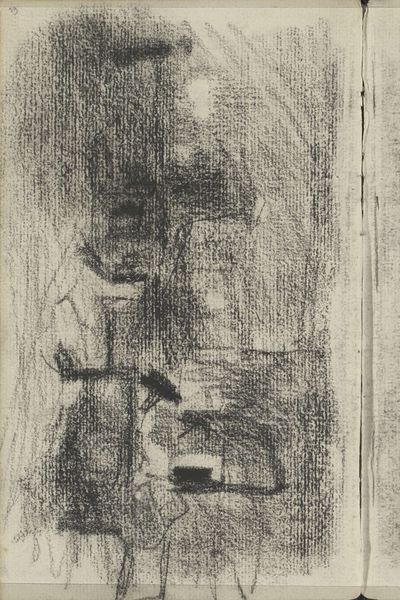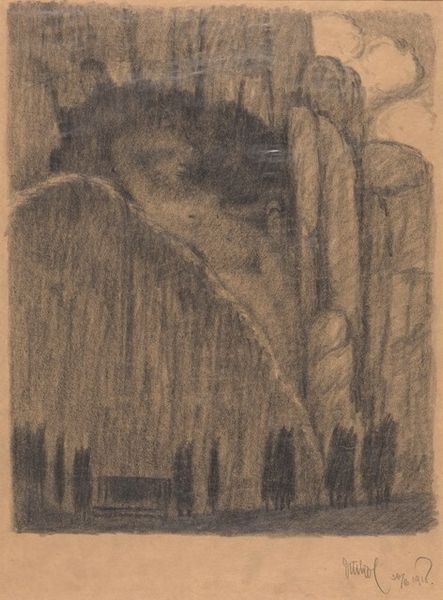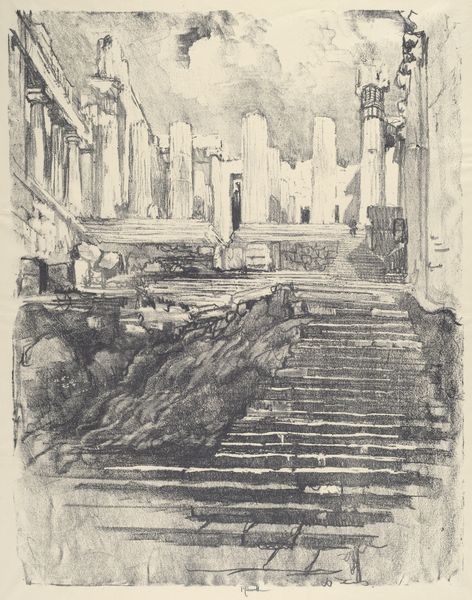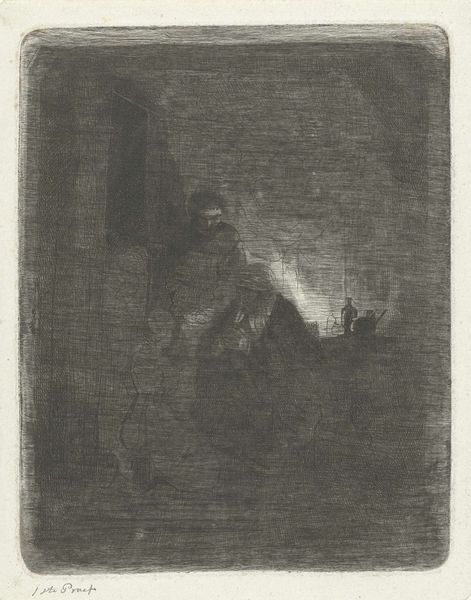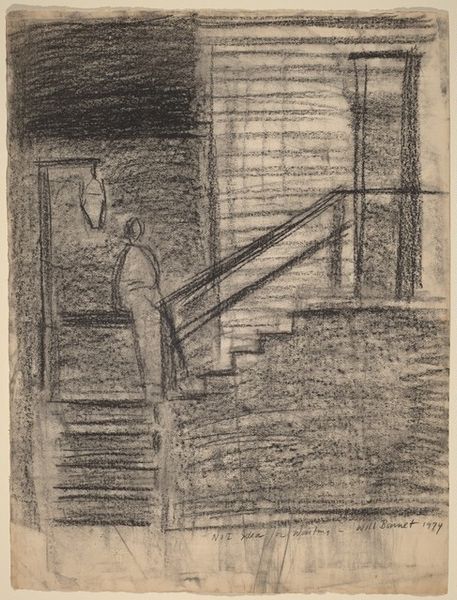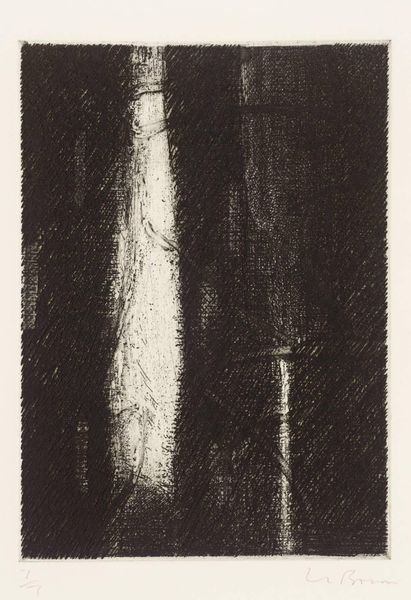
Et moi, Jean, Je vis la sainte cite, la nouvelle Jerusalem, qui descendait du ciel, d’aupres de dieu 1899
0:00
0:00
drawing, ink
#
drawing
#
landscape
#
ink
#
symbolism
Copyright: Public Domain: Artvee
Curator: Here we have Odilon Redon’s ink drawing, "Et moi, Jean, Je vis la sainte cité, la nouvelle Jérusalem, qui descendait du ciel, d’aupres de dieu,” made in 1899. Editor: It strikes me as an image heavy with anxiety. The sketchy lines and the stark contrast create an otherworldly, almost nightmarish quality. Curator: Redon was deeply invested in Symbolism. This piece specifically visualizes a passage from the Book of Revelation, imbuing it with his signature style of dreamlike imagery. Redon, though, often grappled with social and political anxiety during this period of intense nationalism and upheaval in France, which some have linked to these intense moods. Editor: And you see that anxiety reflected, perhaps, in the contrast between the dark, imposing structure at the bottom and the radiant, though unsettling, architectural vision floating above. It reads as a visual power struggle to me. Curator: It certainly embodies a spiritual quest, framed through architectural symbols that denote power and salvation in Judeo-Christian thought. Consider also Redon’s use of black ink to convey something holy, pushing back against artistic conventions. Editor: Precisely, the use of a dark palette against that spiritual concept creates an interesting dialogue—a dialectic that invites deeper consideration. We must not dismiss the work as ‘just art’; Redon is urging the viewer to engage with profound questions surrounding societal, political and cultural realities. This juxtaposition demands scrutiny; who gets access to salvation, what system benefits? Curator: Absolutely. By confronting conventional beauty, Redon invites a more profound encounter, encouraging us to confront complex and often unsettling realities. It's more than just religious; it's political. Editor: Indeed. And as such, Redon encourages critical thought that continues to hold resonance today. Curator: I agree. Its layered meanings reflect a world in constant negotiation between darkness and light. Editor: An essential, almost necessary tension in creating a better future.
Comments
No comments
Be the first to comment and join the conversation on the ultimate creative platform.
